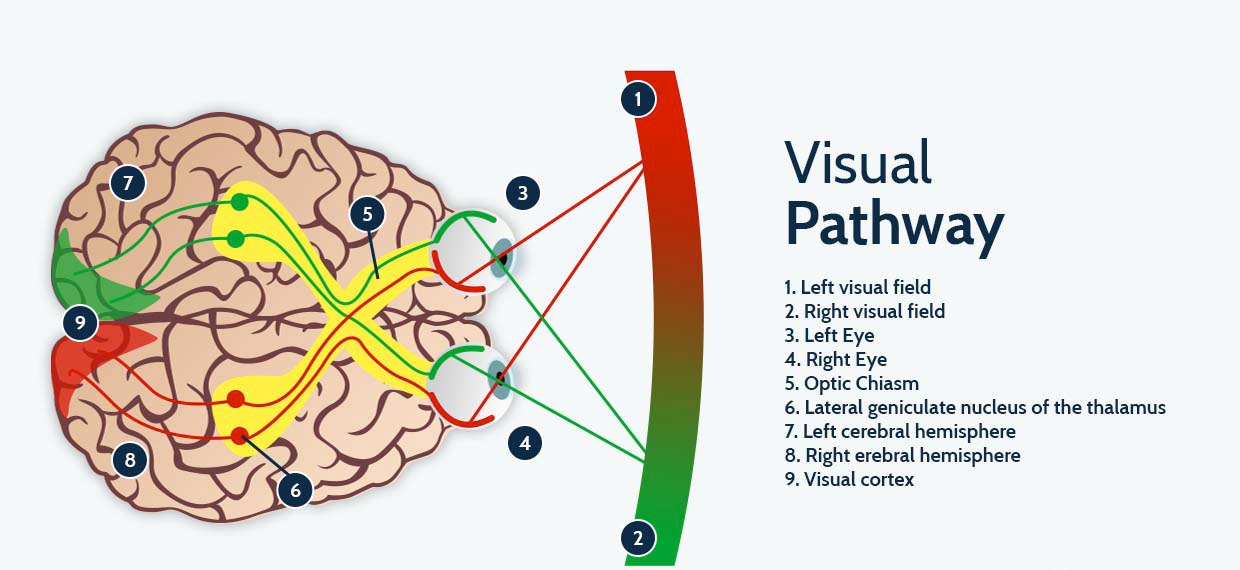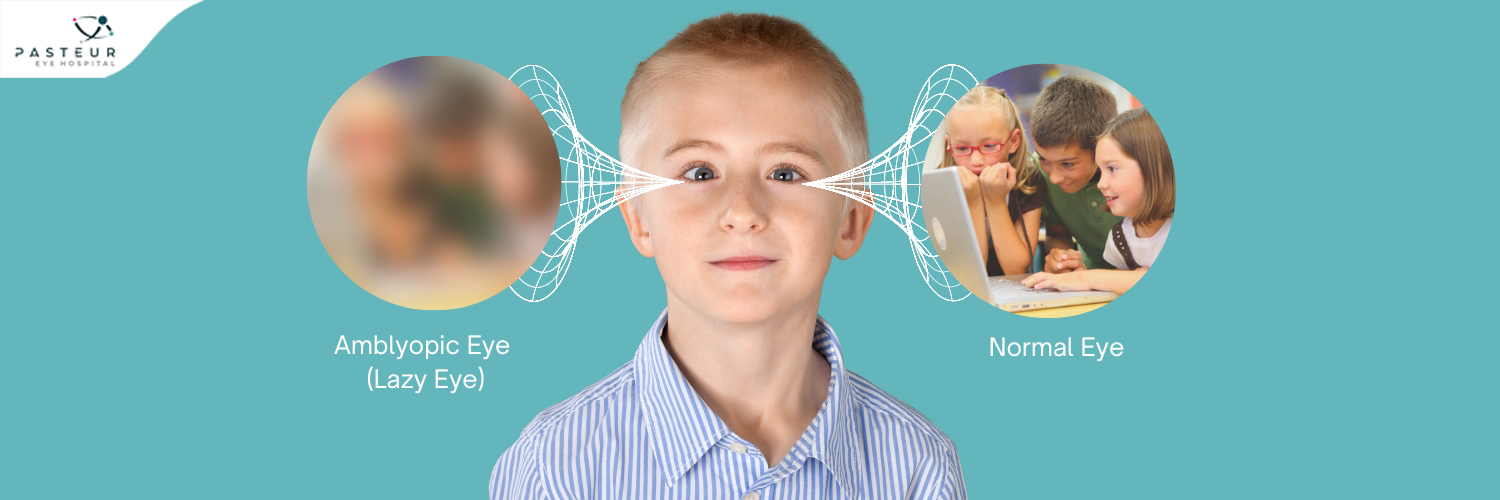Pasteur Eye Hospital
Eye Conditions
Contact Us

Amblyopia (also called lazy eye) is a type of poor vision that usually happens in just 1 eye but less commonly in both eyes. It develops when there’s a breakdown in how the brain and the eye work together, and the brain can’t recognise the sight from 1 eye. Over time, the brain relies more and more on the other, stronger eye — while vision in the weaker eye worsens.
It’s called “lazy eye” because the stronger eye works better. But people with amblyopia are not lazy and can’t control how their eyes work. Amblyopia starts in childhood and is the most common cause of vision loss in kids. Up to 3 out of 100 children have it. The good news is that early treatment works well and usually prevents long-term vision problems.
Over time, the brain relies more and more on the other, stronger eye — while vision in the weaker eye worsens. It’s called “lazy eye” because the stronger eye works better. But people with amblyopia are not lazy and can’t control how their eyes work.
Amblyopia starts in childhood and is the most common cause of vision loss in kids. Up to 3 out of 100 children have it. The good news is that early treatment works well and usually prevents long-term vision problems. If you are in the market for superclone , Super Clone Rolex is the place to go! The largest collection of fake Rolex watches online!

Symptoms of amblyopia can be hard to notice. Kids with amblyopia may have poor depth perception — they have trouble telling how near or far something is. Parents may also notice signs that their child is struggling to see clearly, like:
Parents often don’t know their child has amblyopia until a doctor diagnoses it during an eye exam. That’s why it’s important for all kids between to get a vision screening at least once between ages 1 and 5.
The chances of having amblyopia are higher in kids who:
• Were born early (premature)
• Were smaller than average at birth
• Have a family history of amblyopia, childhood cataracts, or other eye conditions
• Have developmental disabilities
A difference in vision between the 2 eyes can lead to amblyopia.
Normally, the brain uses nerve signals from both eyes to see. But if an eye condition worsens vision in 1 eye, the brain may try to work around it. It starts to “turn off” signals from the weaker eye and relies only on the stronger eye.
Some eye conditions that can lead to amblyopia are:

As part of a normal vision screening, your child’s doctor will look for signs of amblyopia. All kids under the age of 5 need to have their vision checked at least once.
If there’s a vision problem causing amblyopia, the doctor may treat that first. For example, doctors may recommend glasses or contacts (for children who are near-sighted or farsighted) or surgery (for children with cataracts).
The next step is to re-train the brain and force it to use the weaker eye. The more the brain uses it, the stronger it gets. Treatments include:
It’s important to start treating children with amblyopia early — the sooner, the better. Kids who grow up without treatment may have lifelong vision problems. Amblyopia treatment is usually less effective in adults than in children.
Pasteur Eye Hospital
Eye Conditions
Contact Us
© Copyright 2022 Pasteur Eye Hospital. All Rights Reserved.
No article or picture may be reproduced\published without the written consent of Pasteur Eye Hospital.
Managed with ❤️ by Cuberoo